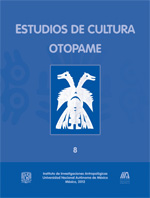Fauna, vocabulary and culture among matlatzinca children from San Francisco Oxtotilpan, Estado de Mexico, Mexico
Main Article Content
Abstract
Language is a useful tool described as a complex of symbols expressing a physical and social panorama within which a human group develops. This definition implies the existence of knowledge regarding the natural and social environment regarding plants and animals considered to be indigenous or folk wisdom. Taking into account the importance of language when approaching an ethnic group, this paper focuses on the ethno-zoological knowledge of Matlatzinca children of school age. Their zoological vocabulary reflects what is important for them in terms of biological surroundings as well as its possible influence on the sociocultural environment. On the basis of the children’s preferences a total of 117 species was included. There were 9 generic terms and 99 specific names of animals. Birds and mammals are the vertebrates which are relevant in the children’s vocabulary.

